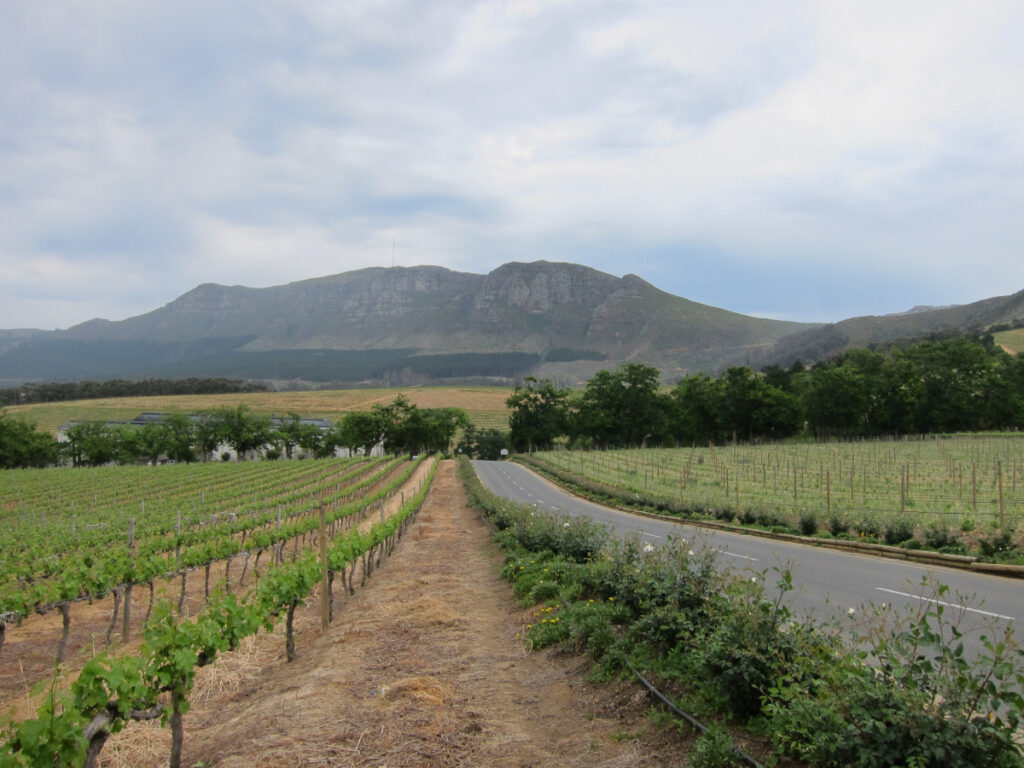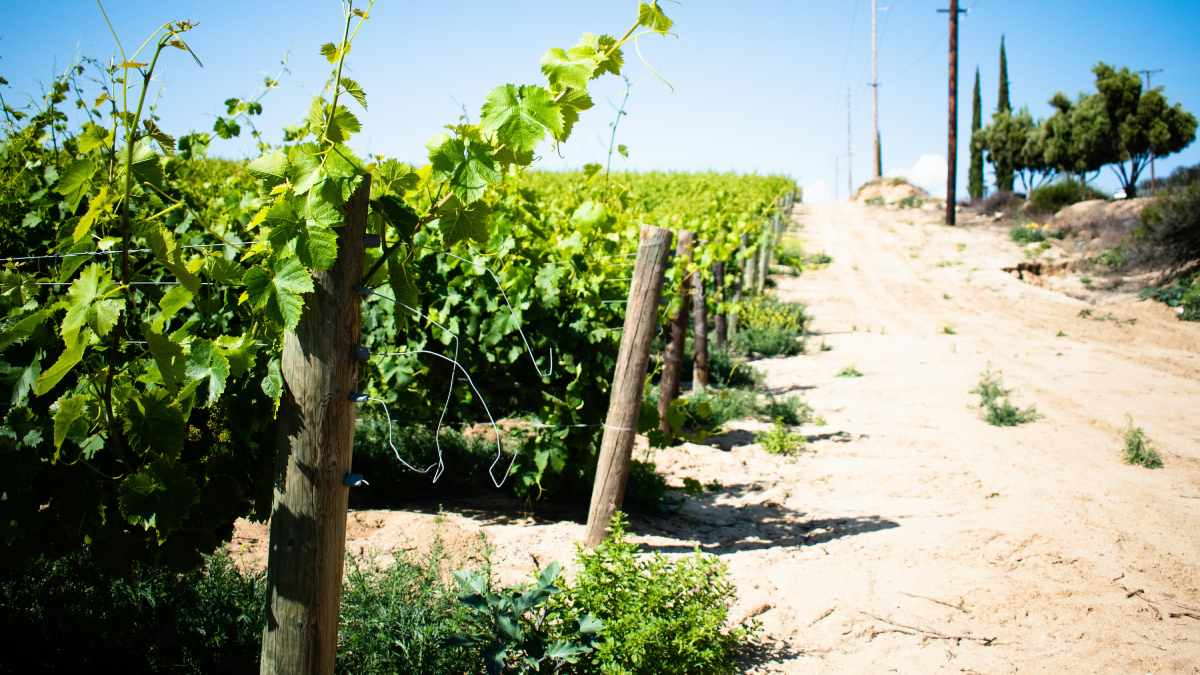Seventy percent of the world’s winemaking regions could become unsuitable for growing wine grapes if global temperatures exceed 2°C above the preindustrial average. This tally comes from a recent study in Nature Reviews Earth and Environment that compiled decades of research exploring the potential impact of climate change on viticulture.
“The regions that are most threatened are regions that are already hot and dry because those regions are likely to get both hotter and drier,” said Gregory Gambetta, a viticulturist at the Université de Bordeaux in France and a coauthor on the study.
However, vineyards in every region will experience their own set of stressors, from extreme weather to disease, that will make it more difficult to grow and produce wine. “The challenge in one area may not be the challenge in another,” Gambetta said.
New Threats to Old Vintages
Viticulture, or agriculture related to grapevines, is a practice thousands of years old that takes place in almost every region and climate in the world. Growing grapes and producing and consuming wine have become integral to cultural identities and economies.
“The grapevine is a very adaptable plant that has room to grow in a lot of different climates.”
“The grapevine is a very adaptable plant that has room to grow in a lot of different climates,” Gambetta said.
Grape growers have spent centuries figuring out how to best grow grapes and produce wine in their regions, specializing in a few vine cultivars that grow particularly well there. That’s why, for example, Argentina is known for its malbec, California its cabernet sauvignon, New Zealand its sauvignon blanc, and France its merlot.
Every region has experienced historic climate shifts, Gambetta said, and has worked out strategies to adapt, such as adding irrigation or adjusting how vines are spaced, trained, pruned, or shaded (vineyard management). Regional cultivars have shifted in the past but have remained fairly steady for several decades.
However, as human-driven climate change warms the globe, alters weather patterns, worsens drought, and heightens extreme weather, many vineyards will be pushed to or past their limits.
Gambetta and his colleagues combed through existing research and created a compendium of how global winemaking regions will fare under moderate and extreme climate change scenarios, what the major threats will be, and how each region may adapt to the oncoming hazards.
The researchers found that if global warming climbs higher than 2°C above the preindustrial average, around 29% of current wine regions will experience climate conditions too extreme to grow grapes. An additional 41% may also become unsuitable for viticulture if growers cannot adapt their methods. The emergence of newly suitable growing regions would not offset the loss.
Up to 90% of winemaking regions in the lowlands and coastal areas of Greece, Italy, Southern California, and Spain could disappear by the end of the century.
Excessive heat and water scarcity likely will be felt in most regions. Climate change will intensify adverse grape-growing conditions around the world: Hot will become hotter, dry will become drier, and stormy will become stormier. Grapevine diseases and pests will likely become more prevalent, but their spread is more difficult to predict.
“I was particularly glad to find such a deep analysis of how different interactions with parasites-diseases may increase or decrease with climate change,” said Ignacio Morales-Castilla, an ecologist at the University of Alcalá in Spain who was not involved with this research. “This is, in my opinion, an expanding field with a huge applied interest that could positively impact growers’ decisions.”
If warming is capped at 2°C, 25% of current winemaking regions might become more suitable for growing, around 26% are likely to remain at about the same level of suitability, and the remaining 49% would become less suited for wine growing.

A Robust Blend of Adaptation Tools
Just because a region becomes less suitable for viticulture doesn’t mean it’s impossible to grow grapes there, Gambetta said. Suitability is more of a continuum. A loss of suitability means that more effort and resources are needed to make grape growing viable and productive.
That could mean introducing or increasing irrigation or carving steppes into mountainsides to grow at milder temperatures. Viticulturists could deploy modular shades during times of peak UV radiation or spray vines with chemicals to ward off pests or diseases. They could adjust vineyard management to make the most of limited water, amend nutrient deficiencies in soil, or plant cover crops to manage the soil’s carbon.
Adapting to climate change could also require shifting wine production into newly suitable areas or diversifying grape varietals to include some that would be easier to grow under future climate conditions.
Preserving wine production must be balanced with responsible environmental stewardship.
However, regions that might become suitable for wine growing in the future might already be used for other crops or grazing land or for maintaining wild habitats. In such cases, preserving wine production must be balanced with responsible environmental stewardship, the researchers argued.
Moreover, diversifying can be complicated if a region’s value in the wine market is tied to a particular kind of grape or flavor, Gambetta explained.
Germany, known for crisp white riesling grapes, could struggle to grow its primary varietal. Many wines are eponymic of their regions: Bordeaux, Champagne, Chianti, and Rioja, to name a few. Pivoting to market other varietals would not be easy.
“Market and tradition and history,” Gambetta said, summarizing the challenges for a region to change its vine cultivars. Plus, “they may not have as much flexibility as others to change what they grow because the land that it’s growing on is marginal already,” he added. Shifting all of that momentum “is easier said than done.”
“The economic costs to shift vineyards to higher latitudes or altitudes may not be affordable for most growers,” Morales-Castilla added.
The future isn’t all doom and gloom, though, Gambetta said. “We’re starting with a crop that is pretty robust and adaptable. Suitability in the future is not a black-and-white thing. There’s room for adaptation.”
—Kimberly M. S. Cartier (@AstroKimCartier), Staff Writer

